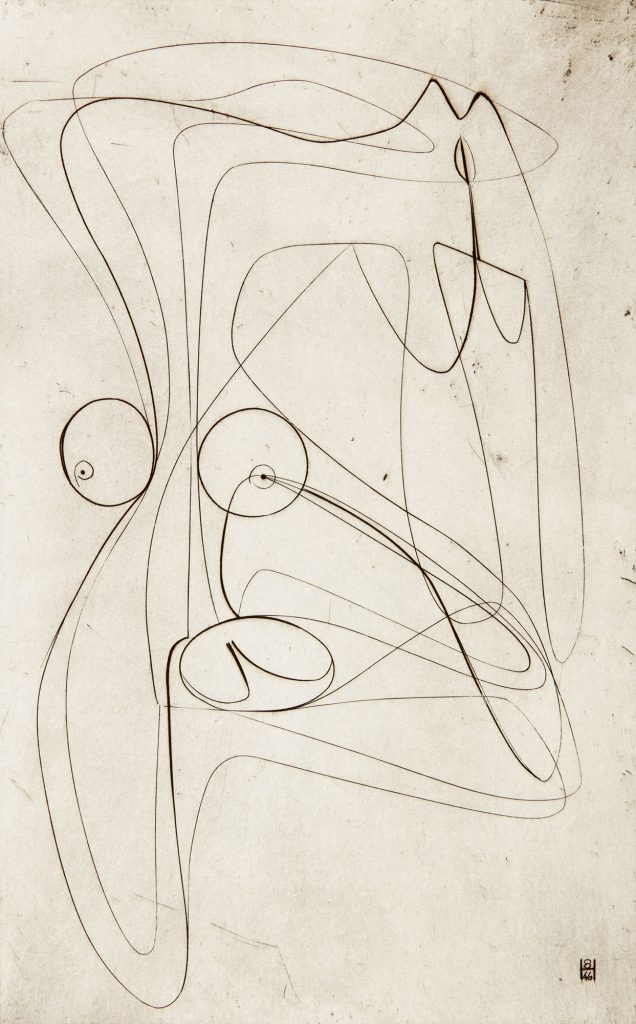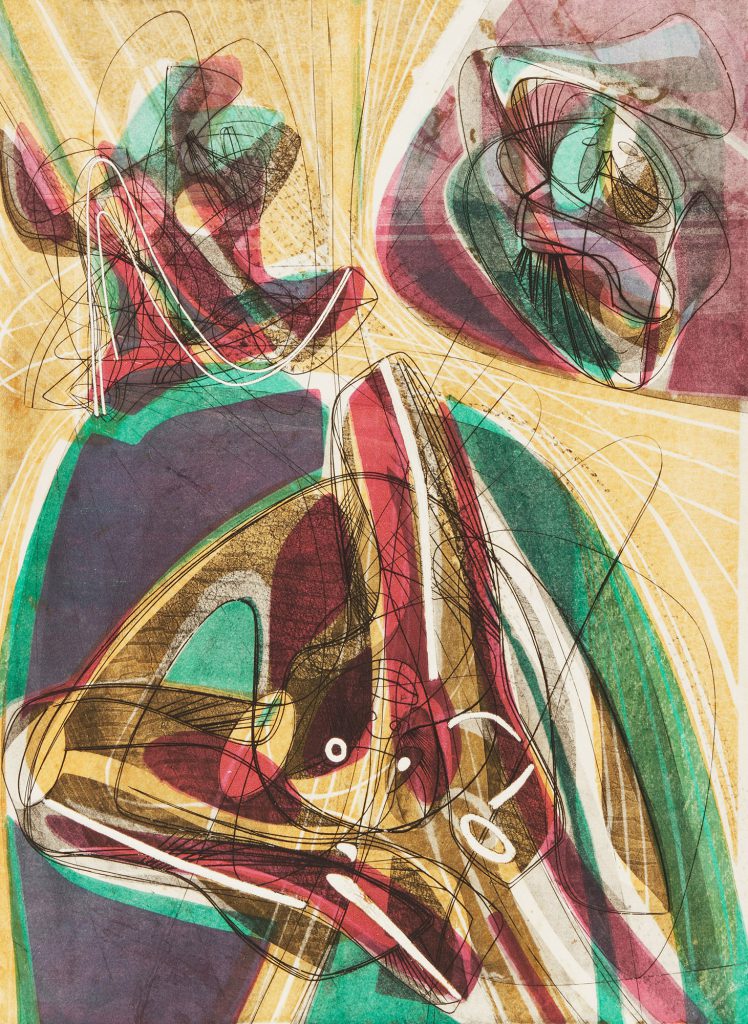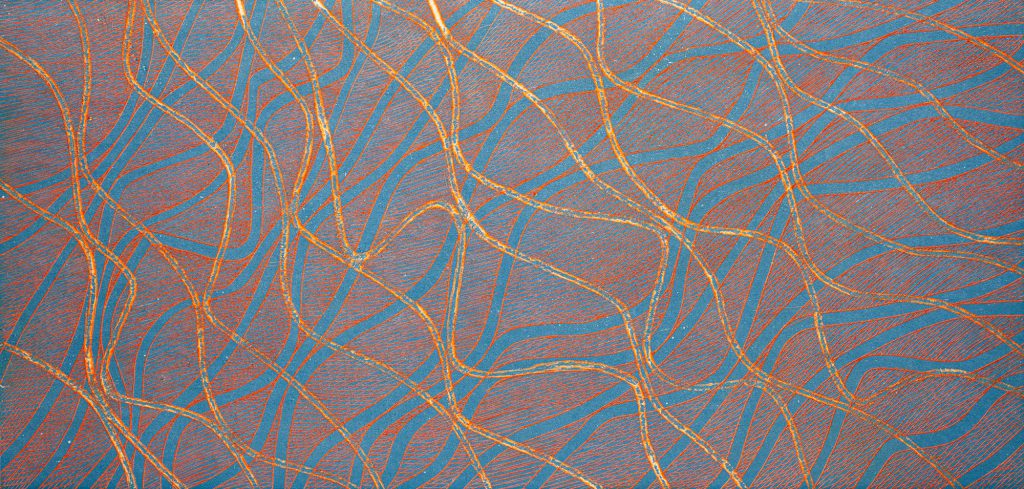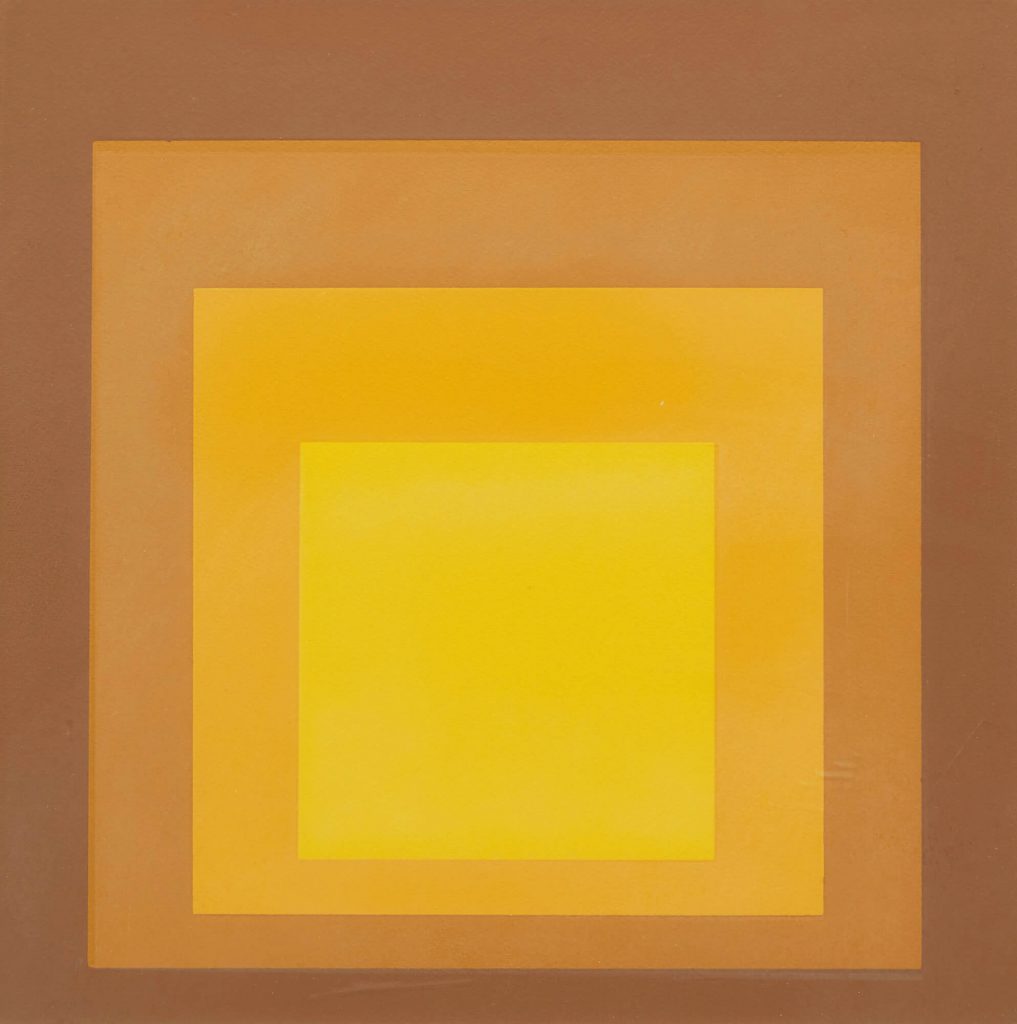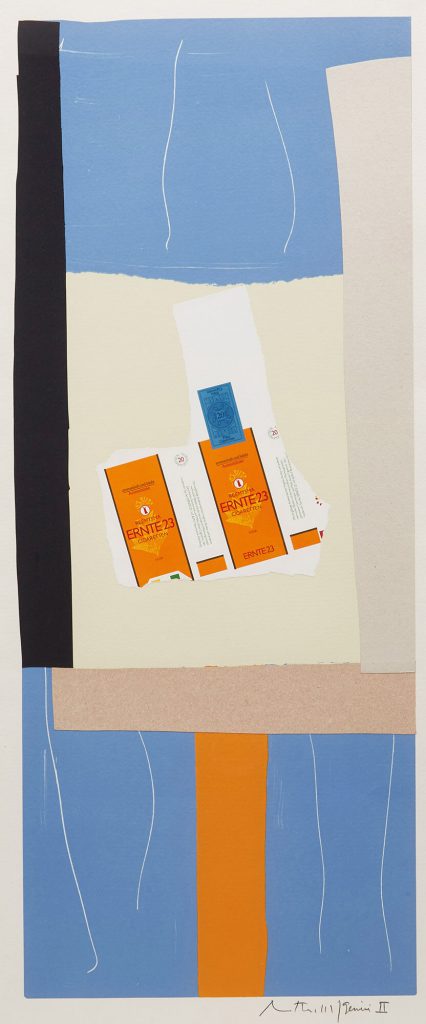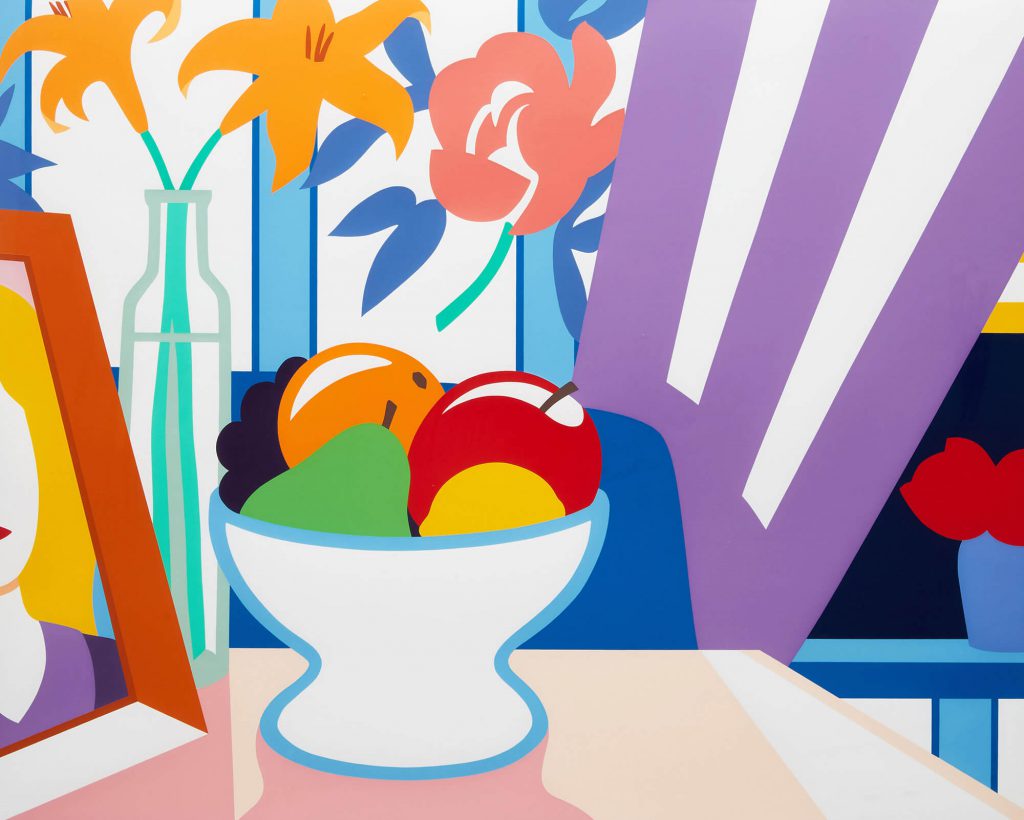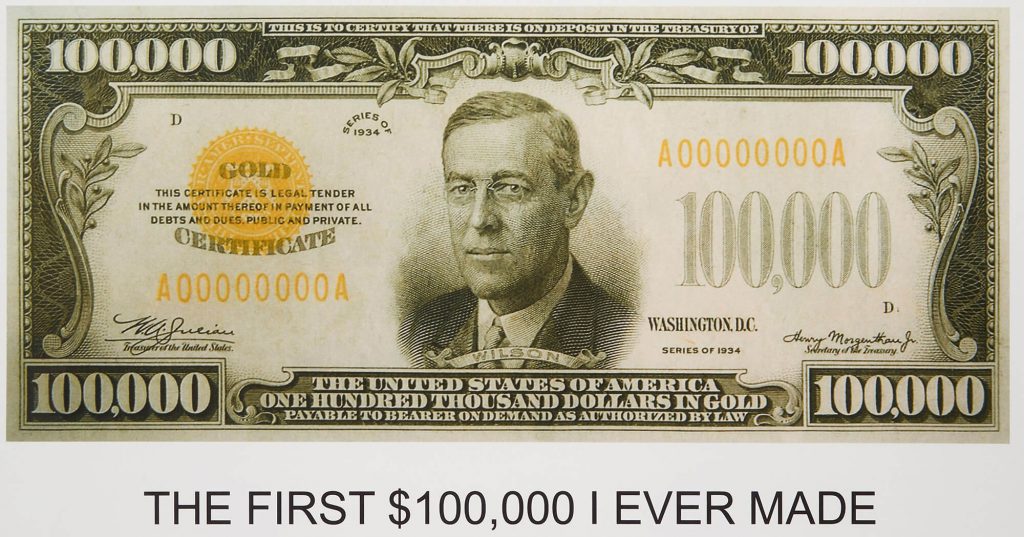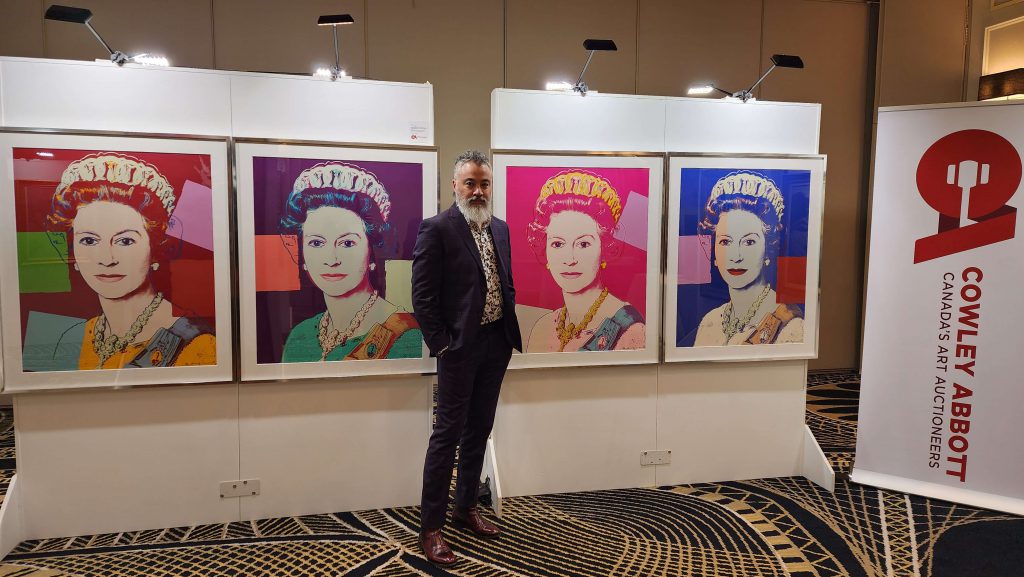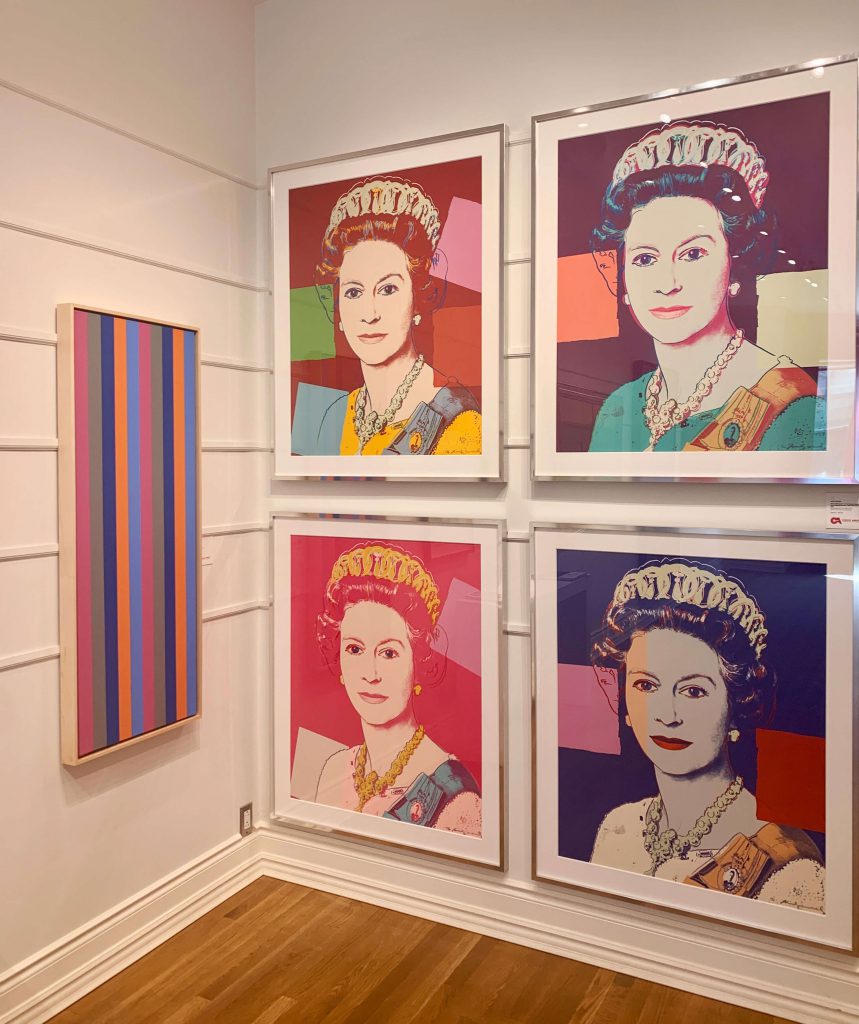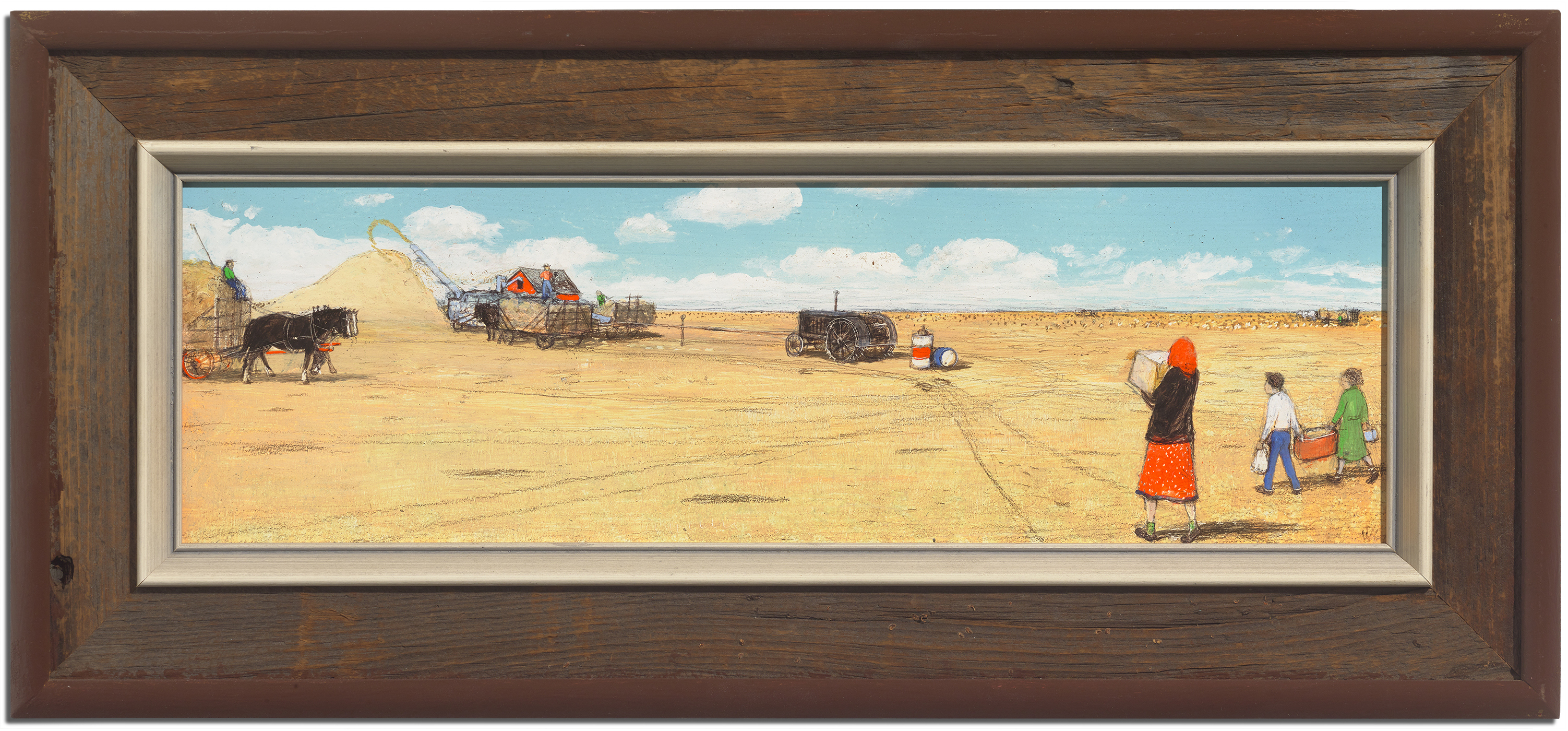Join Art Specialist Katherine Meredith as she speaks with Simone Ludlow and Erika Veh, designers of handmade one-of-a-kind cushions using vintage fabrics. Their company Ludlow & Veh also offers interior design and art advisory consultations. With backgrounds in art history, auctions, design and marketing, they share Katherine’s passion for collecting art with patience and intention.

How would you describe your design style?
Slow design. Not all the same style, not all the same era. Balance, texture, layers, not matching, eclectic. We love including vintage pieces and antiques, something with a patina and a story to it. If you do it intentionally and lovingly, it will work. Never feel like something is done. There is an expression that goes something like- “a room is only finished when you run out of money!”
Where do you find inspiration?
Art, nature, travel, film. Pedro Pascal’s apartment in the recent film Materialists, and movies like Home Alone, The Shining, I am Love, and The Birdcage. We are inspired by place and time. Matisse interior paintings. Unusual colour combinations we spot on the street or in nature.
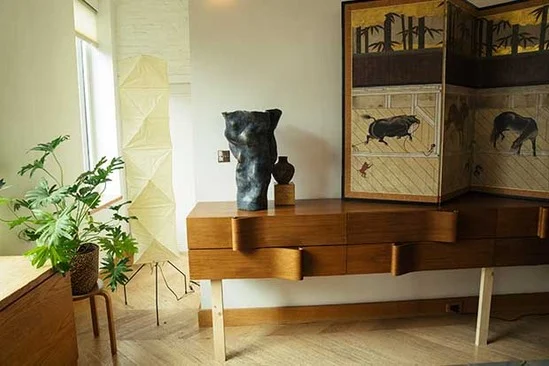
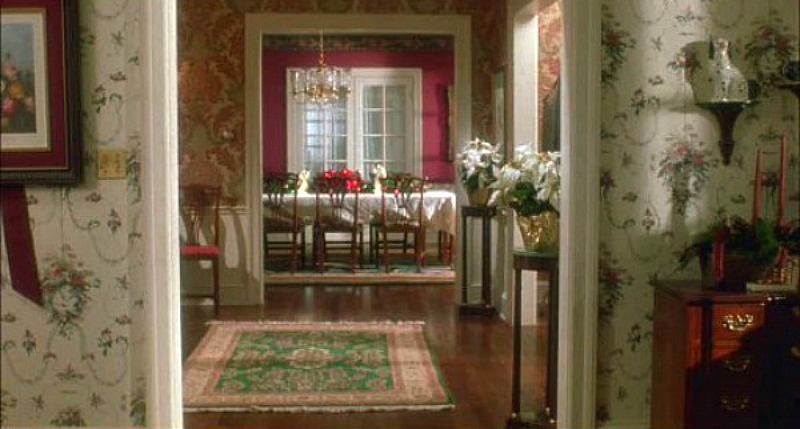
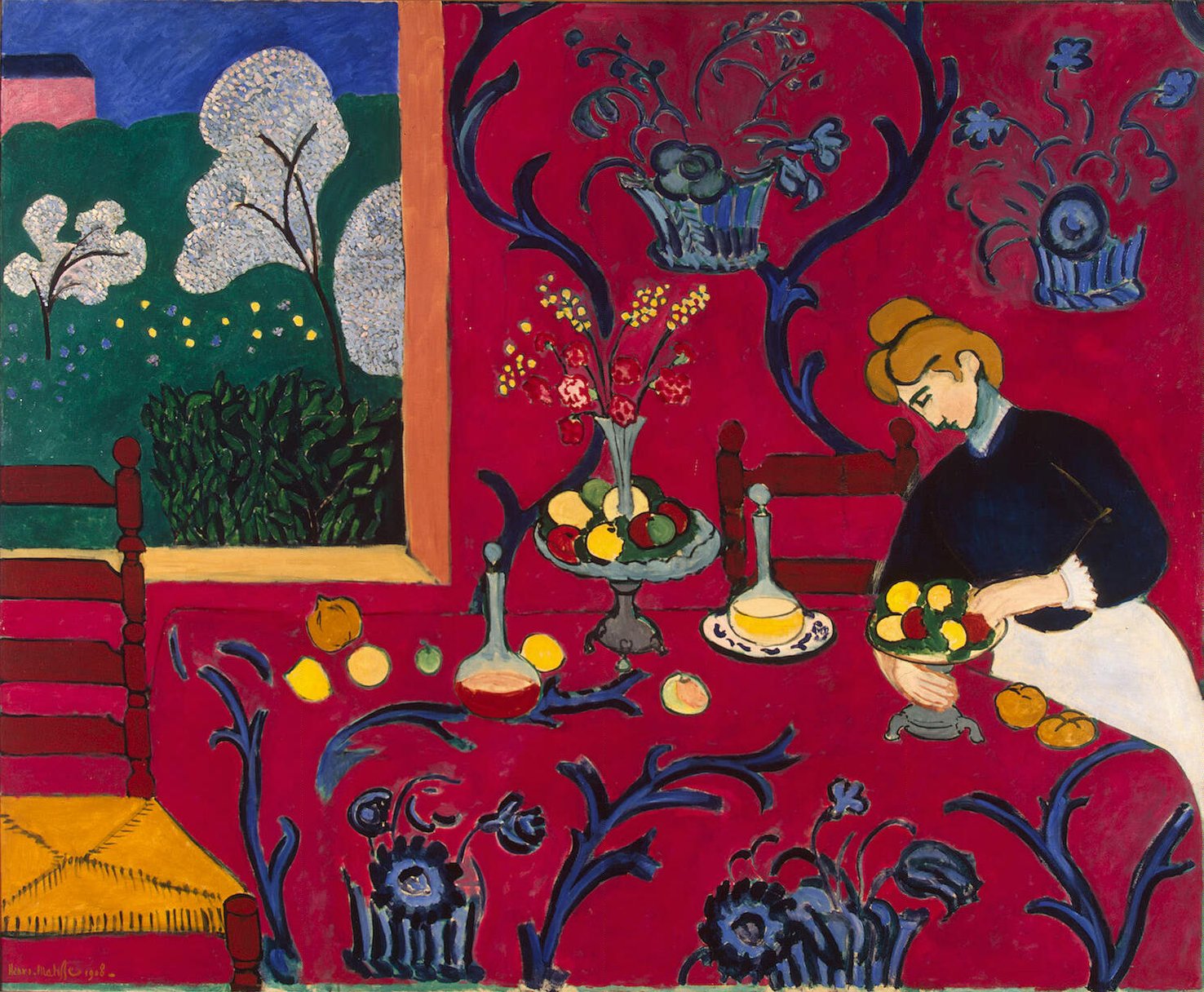
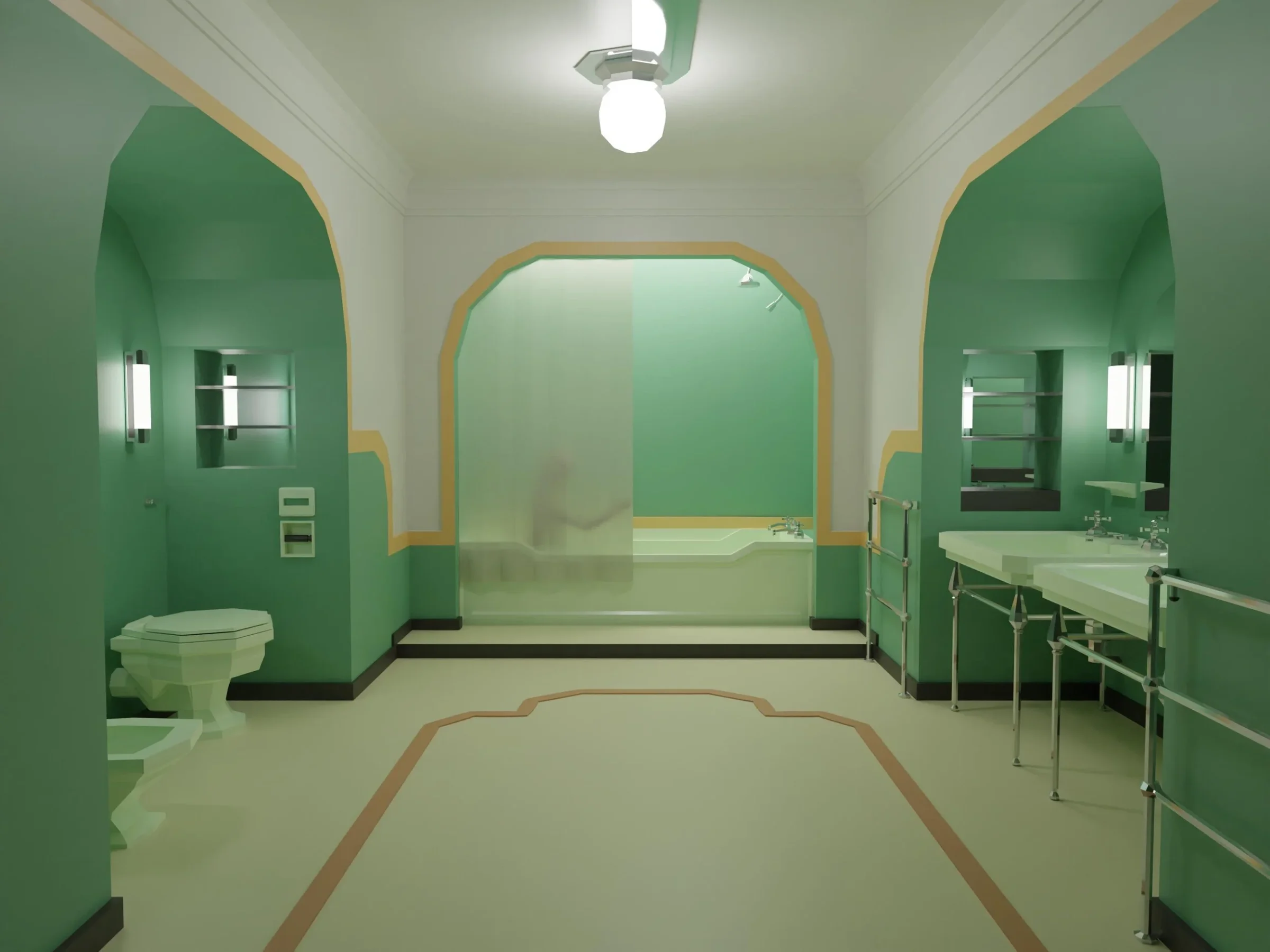
Why do you think original fine art is an important part of interior design?
It’s a layer that finishes everything. Art adds a depth and a tone of your own personality to your home. There is something lively to a home filled with original art. It takes emotion. You don’t want your house to look like a staged showroom, or the same as the house down the block. A mass-produced print from a box store doesn’t elicit pleasure, it just fills a wall. Art adds personality, meaning, joy.
What advice would you give to someone who is new to art collecting?
Buy what you love, and then your house will be a reflection of your personality. It doesn’t matter if the artist is new, local, unknown or from the past. It doesn’t have to be expensive. It should be something that speaks to you. Don’t set out to buy art that matches your decor. If you love it, it will work and you will find a place for it. Have a bit of patience. People want things so quickly and so effortlessly, but it means so much more when you take your time and put effort into it, and it shows. You feel better about it because it’s a reflection of you.
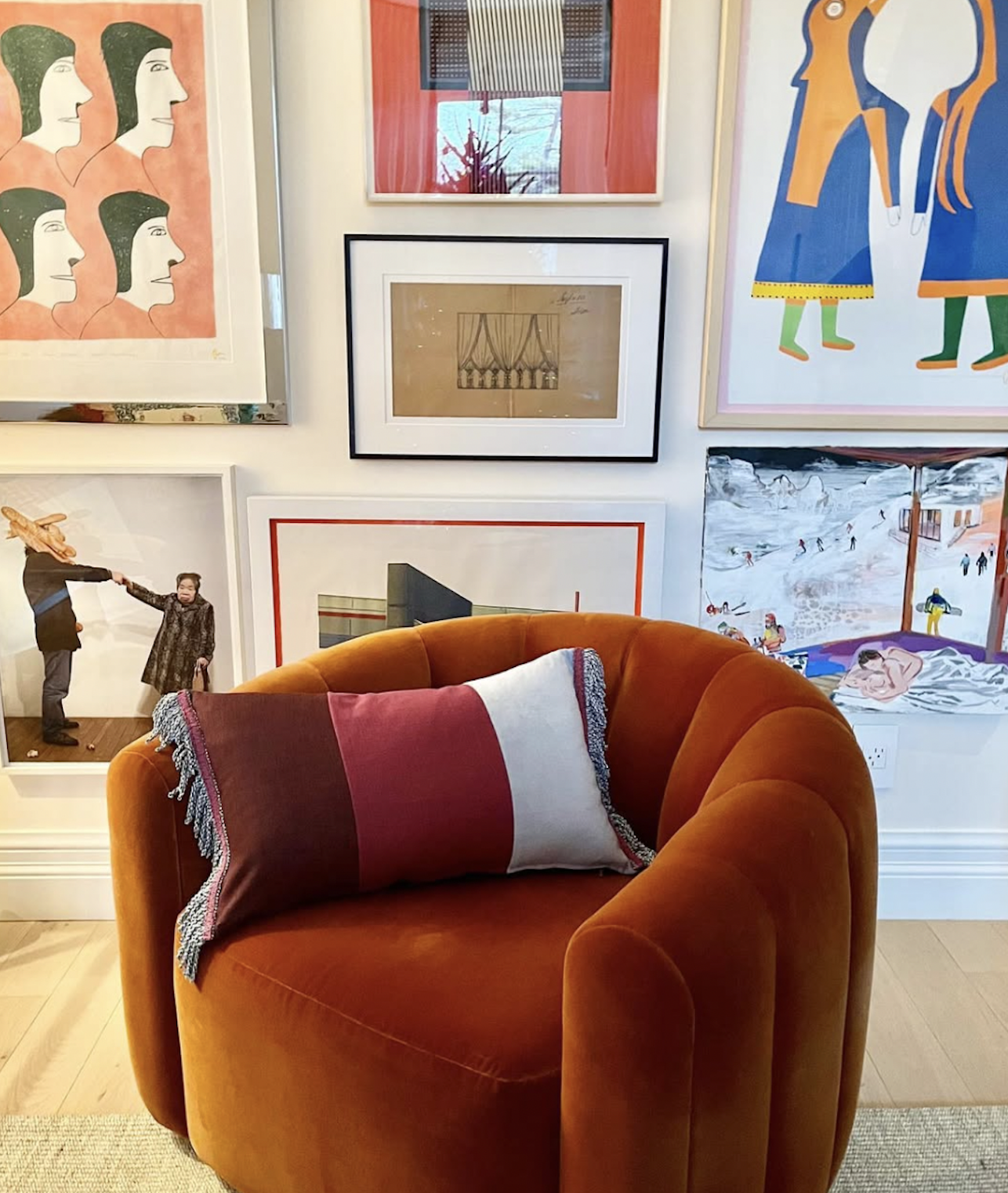
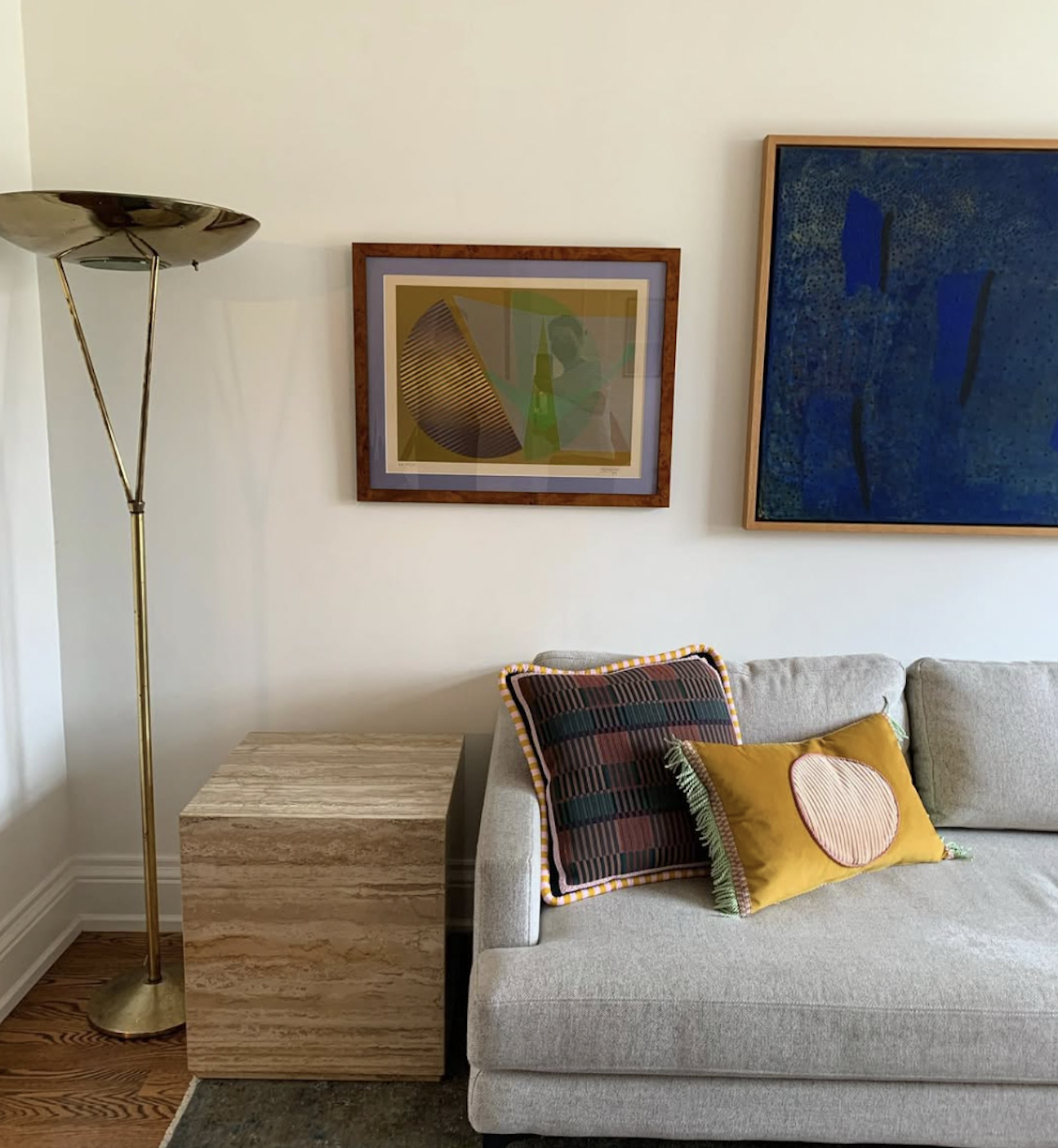
How do you approach auctions specifically, in comparison to other ways of acquiring art? Do you find any advantages or challenges?
Advantages: you see such a broader scope of art, and artists you wouldn’t normally see or necessarily seek out. Better value. There’s no inflated art gallery commission – the price is what the market will stand.
Challenges: the high volume of artwork – you have to have the patience to look through the entire listing. Everything at auctions is framed “as-is” and it can be difficult to imagine a work in a new frame that is better suited to your space. But framing is everything and can really transform the art and the room!
If you could choose any artworks from Canadian art history to put in your own living room, what would you choose and why?
Erika: There are many Canadian artists I admire and support. If I have to select just one piece – I would have to say Horse and Train (1954) by Alex Colville. Its haunting simplicity captures the tension between nature and machine, which feels very relevant at this time in the world. It also evokes a sense of Romanticism in the solitary, noble horse confronting the unstoppable force of modernity. A reminder that life is constantly moving, changing, and that inevitably time escapes us all.
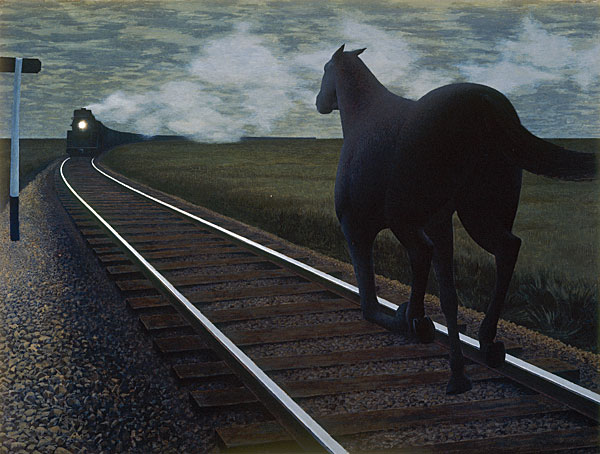
Simone: This is almost impossible to answer, so I’m simply going with immediate impulses. I love Alex Colville, and I especially love his works featuring dogs, so perhaps Stove. It’s such an intimate and tender piece, and it captures so well the simple (and magical) joy of sharing your life with a dog.
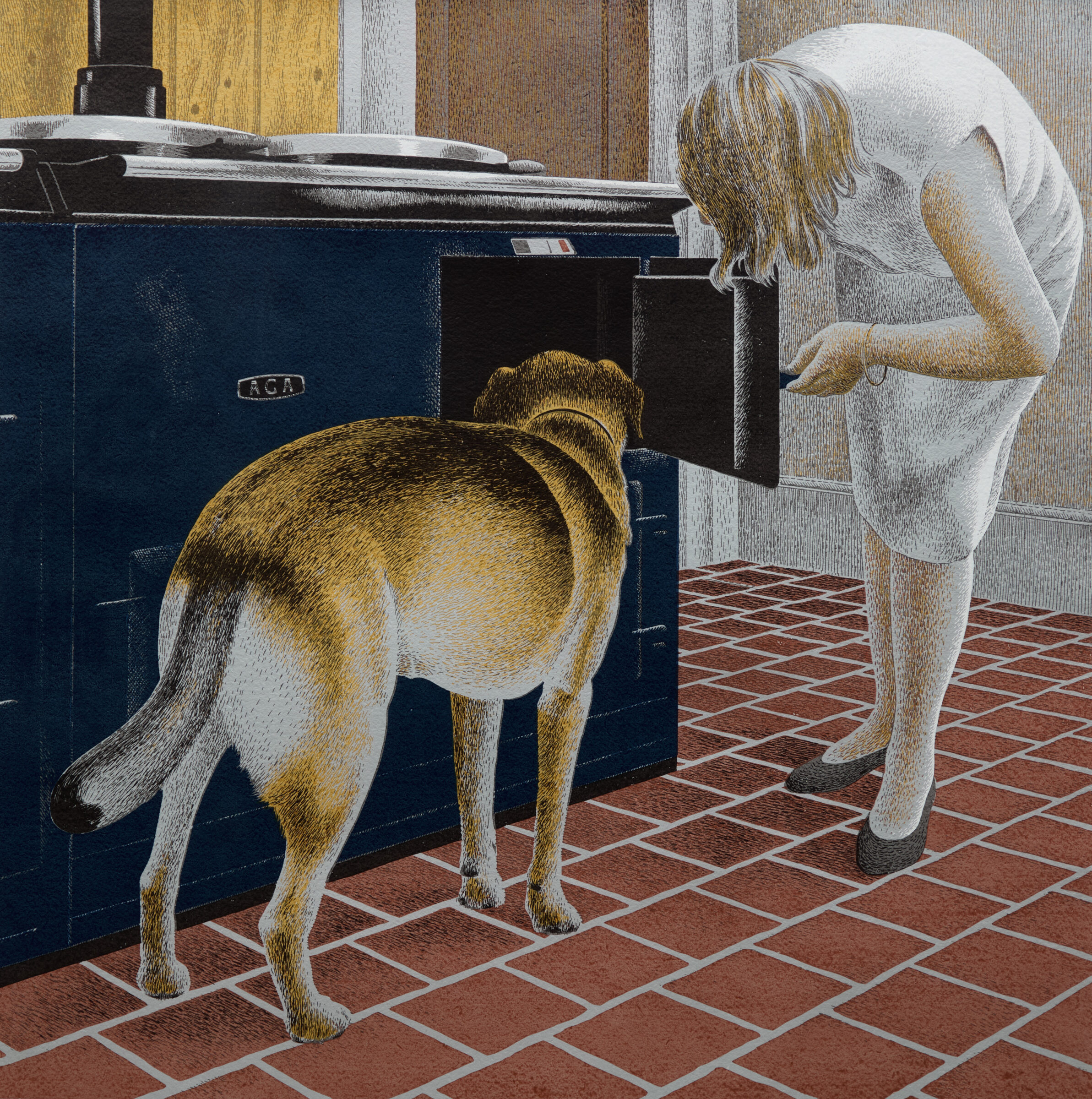
I also love Jessie Oonark, so almost anything by her. I love her use of colour, and the bold, graphic nature of her work.
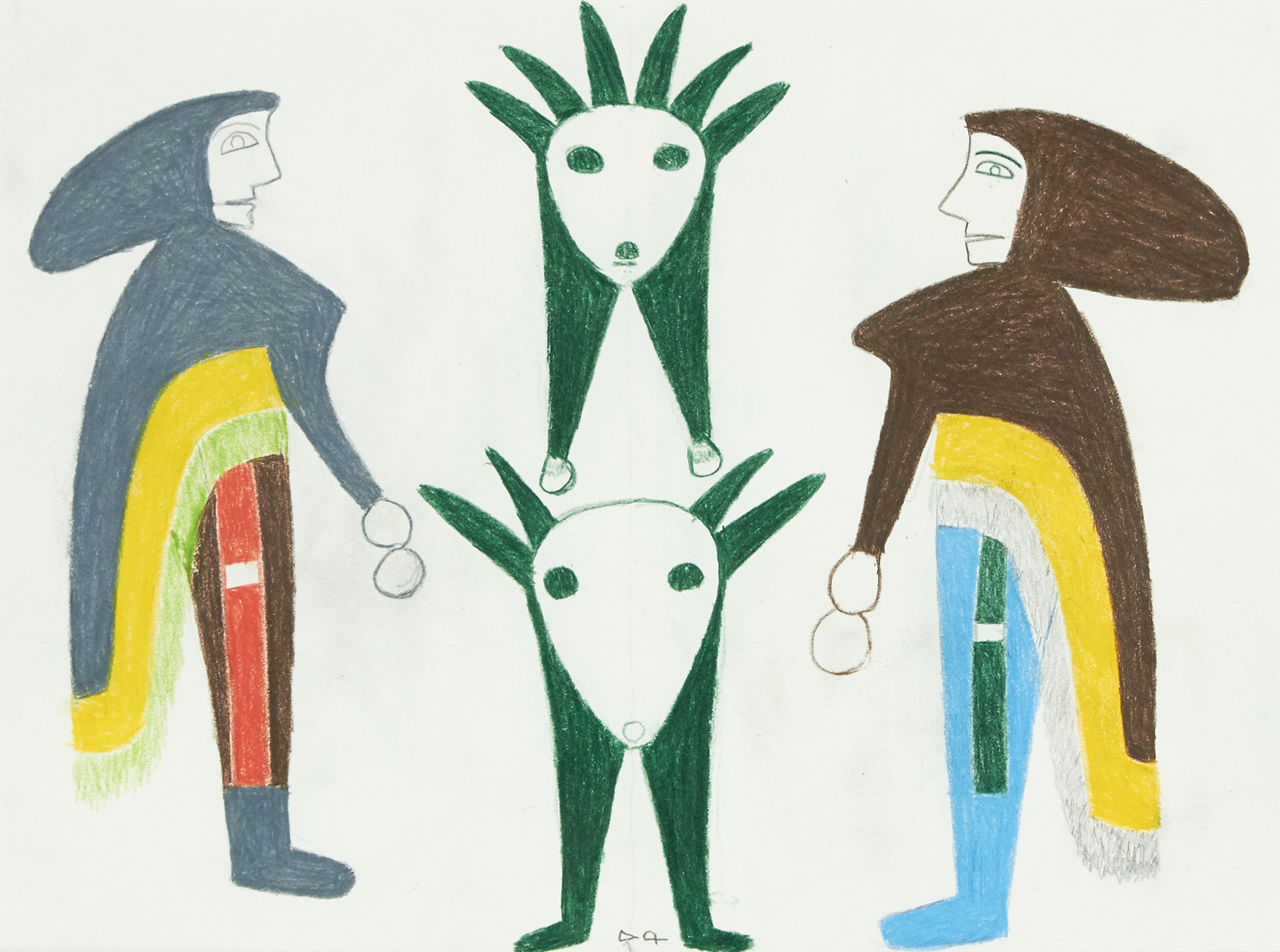
Margaux Williamson’s more recent works of interiors are also favourites. As I mentioned before, I gravitate to pieces featuring interiors, and Margaux’s are so interesting and I find them entirely
captivating.
And I mean, who wouldn’t want a Lawren Harris iceberg?
If you could choose any artworks from ALL of art history to put in your own living room, what would you choose and why?
Simone: This is truly an impossible question! Based entirely on immediate instincts – The Little Street by Vermeer at the Rijksmuseum. I also have always loved David Hockney; he’s so joyful and loves life, and that is so apparent through his work. I saw his recent retrospective in Paris, and I am particularly drawn to the paintings of his home in LA and his British landscapes. Paul Nash’s 1930’s painting Harbour and Room at Tate Modern has also been a constant fascination. I also absolutely love the art and design from the turn-of-the-century Vienna Secession movement led by Gustav Klimt.
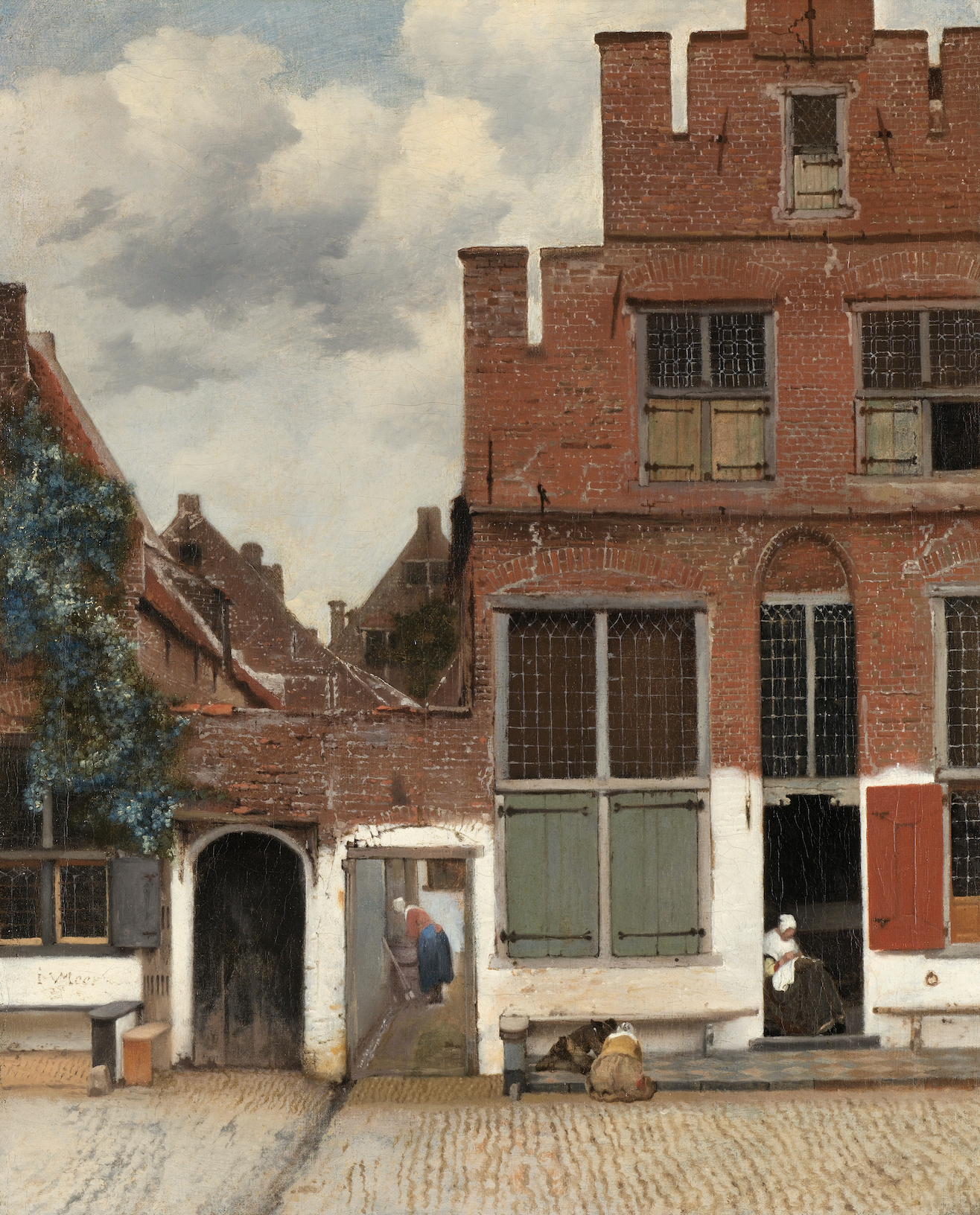
Erika: If I could select a piece of art for my home, it would be Sonia Delaunay’s Electric Prisms (1914). I had the pleasure of viewing it in New York, Guggenheim’s exhibition “Harmony and Dissonance: Orphism in Paris 1910-1930”. Both the scale and bold rhythmic motions of colour have stayed with me ever since. I have also always carried the same admiration for the Nike of Samothrace at the Louvre, a timeless emblem of victory, hope and forward momentum.
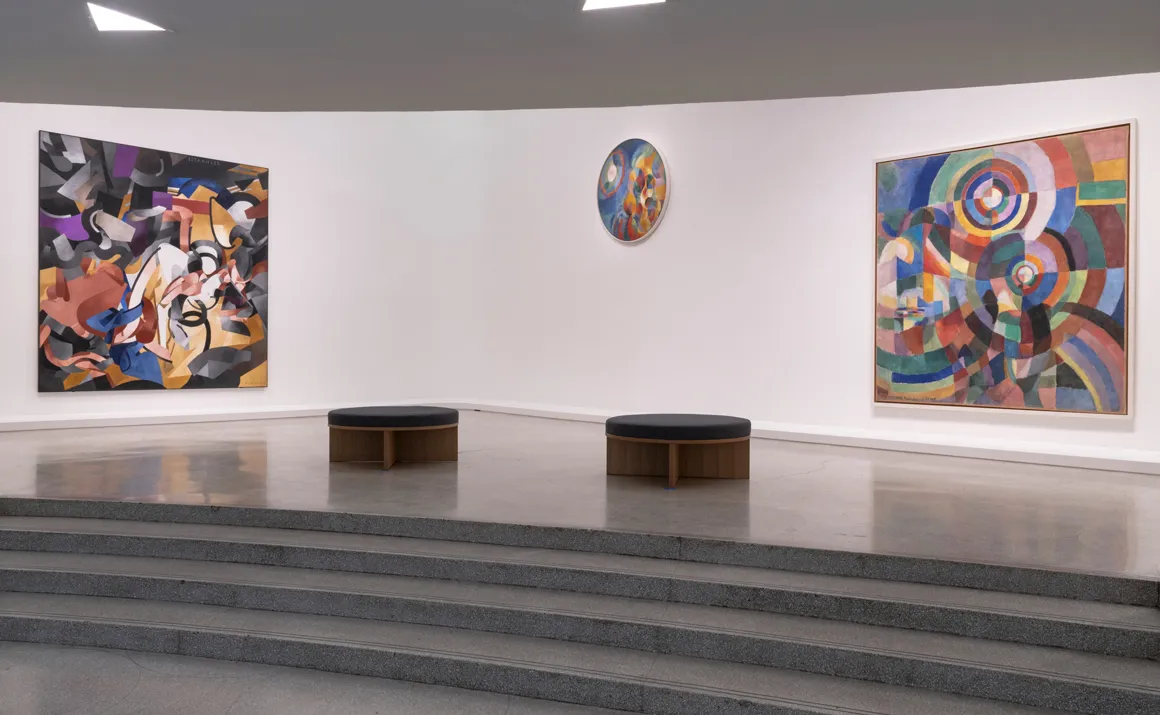
Which artworks from our September online auction do you have your eye on? And how would you style them in a room?
Simone: What a wealth of beauty to choose from! One selection would be Lawren Harris’ Study of a Verandah. I love witnessing the traces of an artist’s process, and in this piece the sketches of the trees and the script on the paper’s reverse delight me. The verandah itself is also so inviting – the architecture draws the viewer in. I would love to sit there and have a glass of wine.
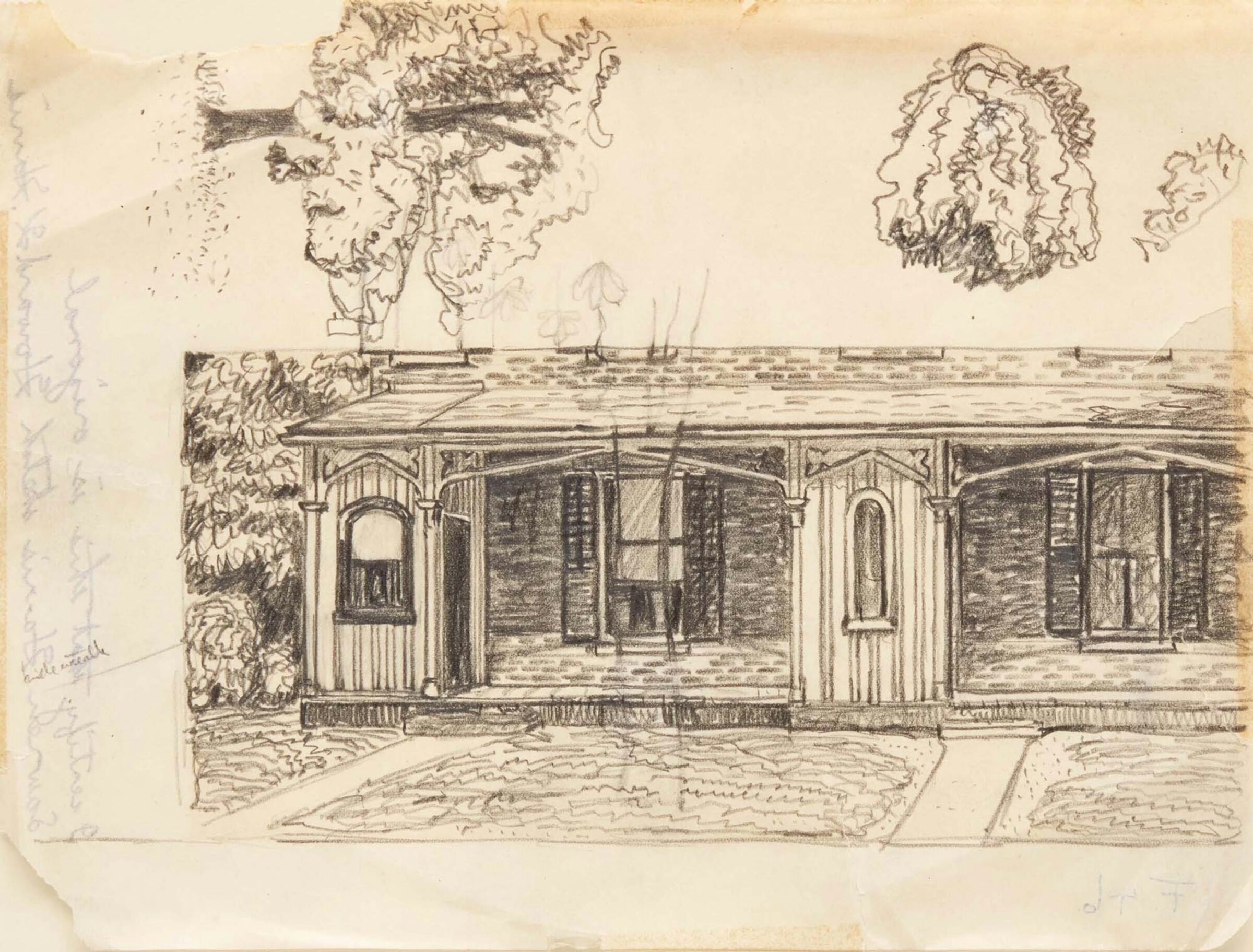
I also gravitate to Fortin’s Montréal. I love his use of colour and the somewhat chaotic, dense scene he has created. I went to school in Montréal, and this piece evokes the feeling of the city for me – layered, busy, a bit gritty, beautiful, full of life.
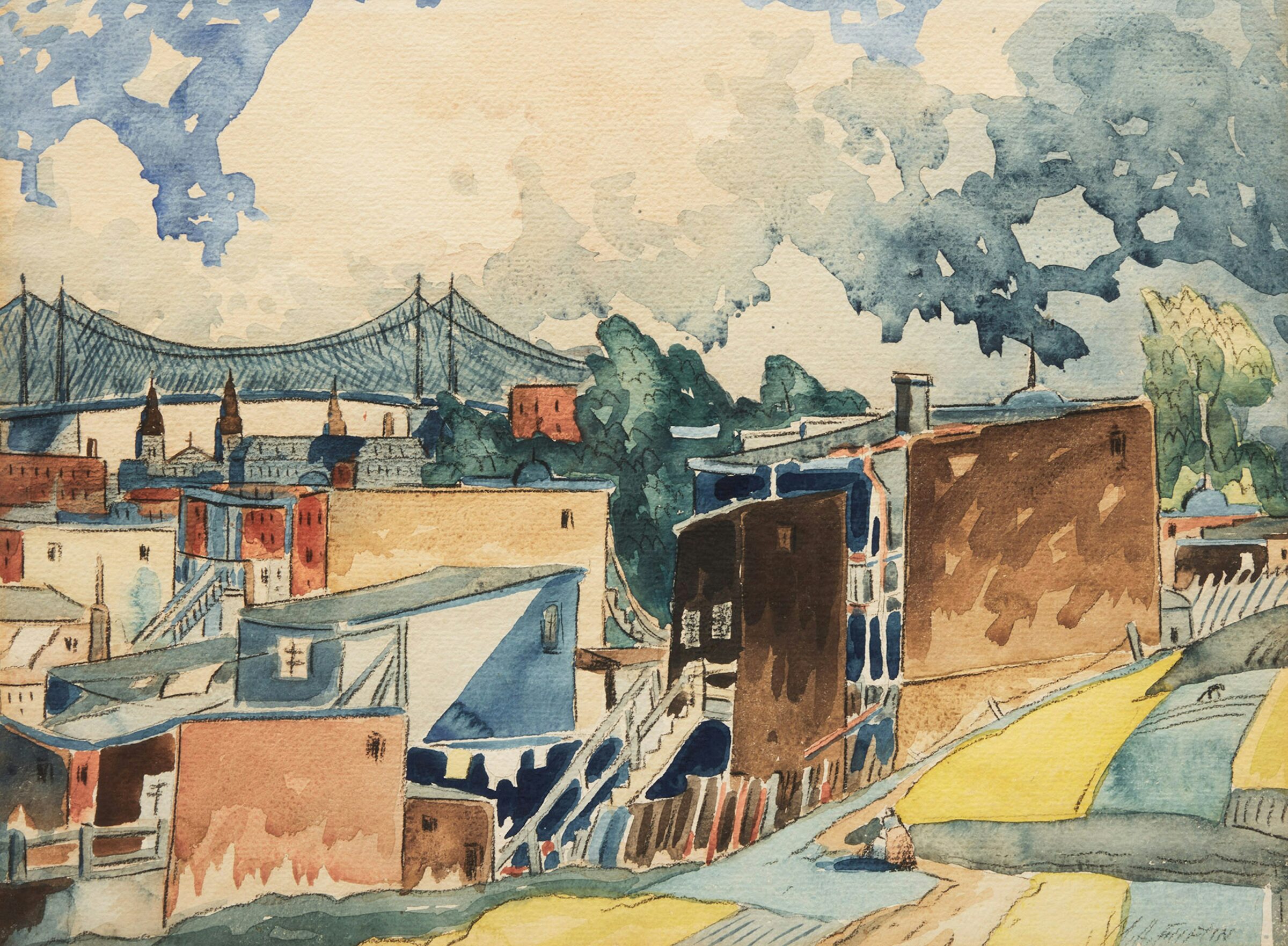
I also must include some more graphic pieces – I always love them for balance. The colours in Fly me to the Moon by Frank Sinatra (who knew?) are beautiful, and I appreciate the feeling of motion that it suggests. Philomène by Jacques Hurtubise echoes the Sinatra piece in an interesting way, and I would love them displayed together. The blue and red are arresting, and I love their juxtaposition with the off-white ground.
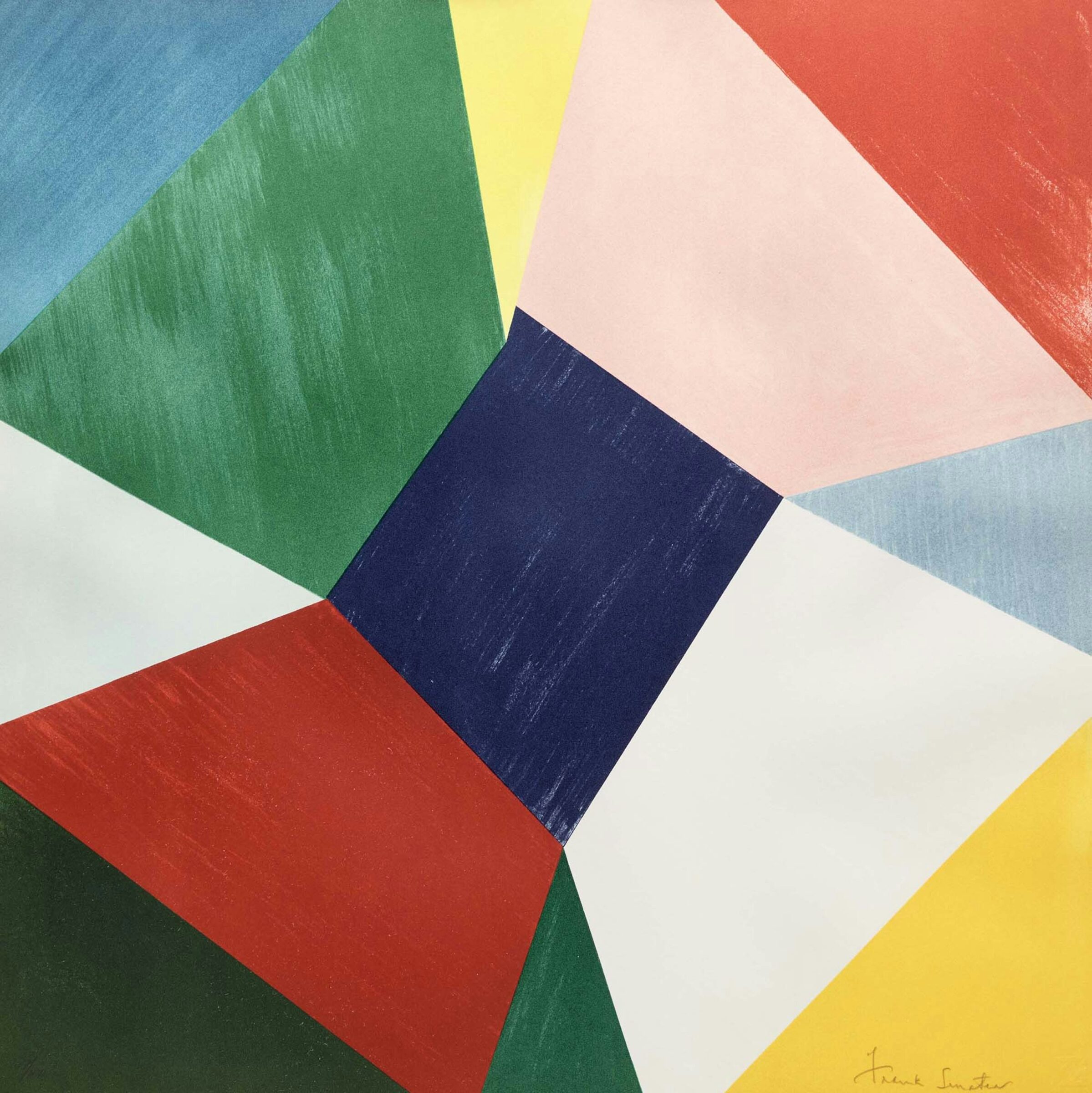
Erika: I am in love with Jim Ritchie’s female figure sculpture from the Quebec lot! It inspires me because it reminds me of the beauty, resilience and softness I recognize in the women I cherish in my life.
I also have a black and white striped marble plinth where this sculpture would look so stunning!
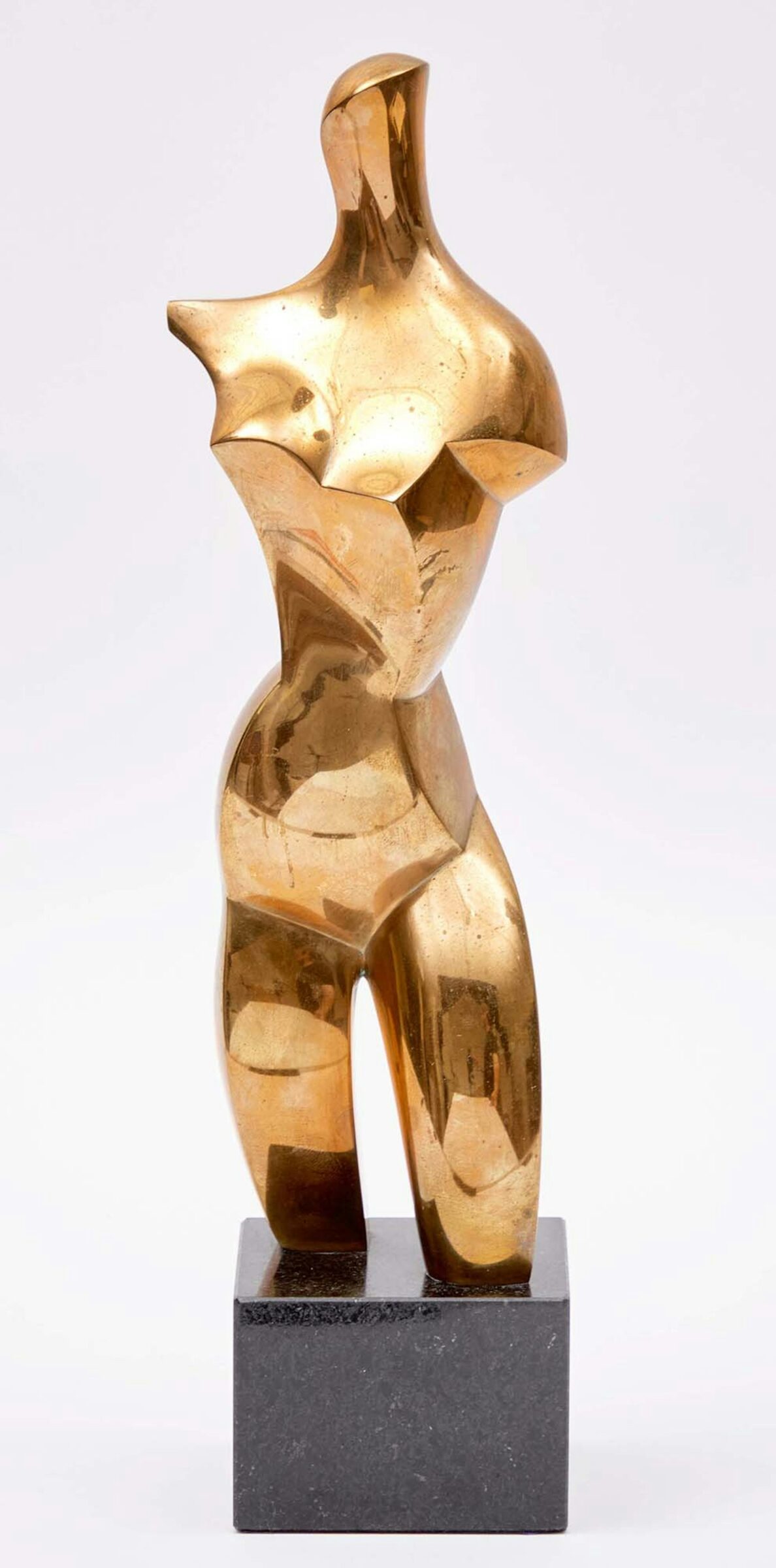
What I love about Winter Sleighing Scene by A.Y. Jackson is that, while the artist captures a distinctly Canadian winter scene, he departs from the expected palette of icy blues and greys, choosing instead a feminine blush for the sleigh and lively touches of pink in the trees. A choice that brings unexpected warmth and a smile to the winter scene.
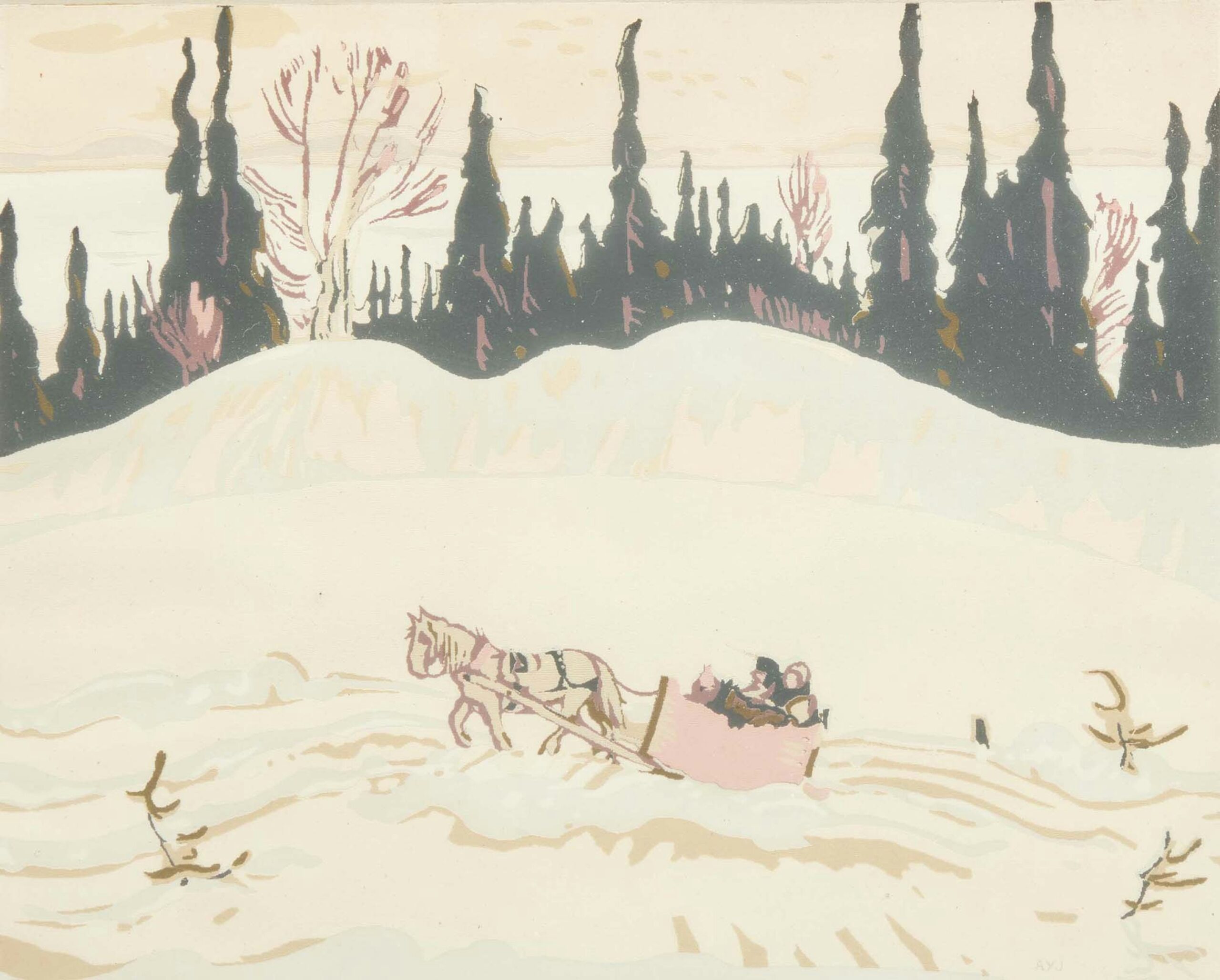
I was also drawn to Fly Me To The Moon by Sinatra for its bold shapes and vibrant interplay of colour, which is a style reminiscent of one of my favourite short lived art movements; Orphism – with its rhythmic energy and sense of movement. And perhaps also because the artist was also the infamous crooner!
For more information on Ludlow & Veh, check out their website and Instagram. And for further conversation on collecting art with intention, join Simone, Erika and the Cowley Abbott team for our 5 à 7 on Thursday, September 11th. RSVP at collect@cowleyabbott.ca.



